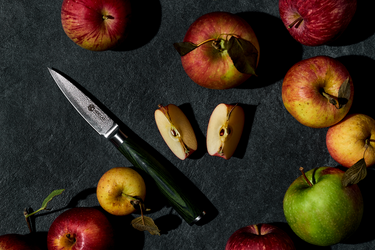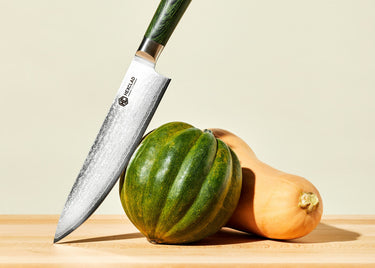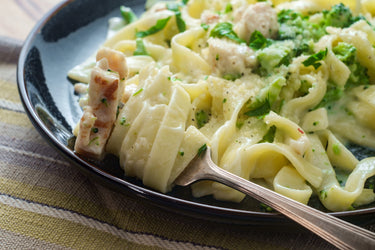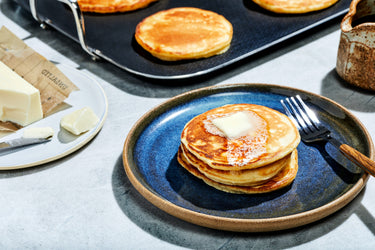How To Season a Stainless Steel Pan and if You Should
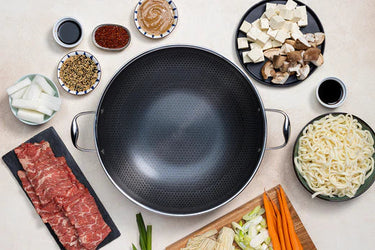
It’s essential to take care of your pans if you want them to last. But we don’t always know what that entails.
Of course, we know the basics — wash them after use, dry them, and store them carefully. However, if you aren’t seasoning your pans, you may not be doing all you can to keep the integrity of the pan intact. You’ve probably heard of seasoning a cast iron pan before.
Well, we’re here to tell you that cast iron isn’t the only type of pan that benefits from seasoning.
If you’re the proud new owner of a set of stainless steel pans, pay close attention. It’s time to season those bad boys so they can be ready for your next big meal.
At Hexclad, we take pride in our products. We know that we’ve delivered cookware that meets the highest quality and standards (does it get any tougher than Gordon Ramsay?) and we are proud of our revolutionary cookware technology.
But we also believe it’s our job to give you the most possible information when it comes to cookware. We want you to know your cookware like you know your own name. Understanding the nuances of seasoning pans is a strong step in the right direction.
Our Taste Buds Have Evolved
When humans first started using fire to cook food, seasonings weren’t exactly plentiful. There was a lot we were still learning about food. Since then, humans have learned how to enjoy our food with many flavors and flavor combinations.
Interestingly, the reason we enjoy food more now isn’t because our taste buds haven’t evolved, but because our thinking about how taste buds work have changed. By finding new combinations and using new spices and herbs, we found new ways to enjoy food and stimulate the senses of our palates.
This is where pan seasoning comes in.
When our pans are correctly seasoned, the spices and herbs we add stay with our food instead of being left behind in the pan. This allows for a better, stronger flavor in our foods and a deeper enjoyment of our meals.
Seasoning the pan is the first step in cooking; next comes enjoying our food thoroughly.
What Does It Mean To Season a Pan?
Maybe you’ve heard of seasoning, but you aren’t entirely sure what it means or if it’s necessary.
Seasoning a pan means that oil your pan and then heat it to create a solid coating on top of the cooking surface. The fundamentals of this process operate on the chemistry of polymerization.
When certain oils are heated, the molecular bond of the oil changes the consistency from a liquid to a solid. This is what polymerization does to a pan. It creates a slick, hardened exterior on the pan's cooking surface.
Why Do You Need To Season Pans?
There are three main reasons you want to season your pans.
Creates a nonstick surface: Seasoning creates a nonstick surface for cooking — meaning more flavor on your plate and less stuck to the pan. Plus, it means less scrubbing and elbow grease after your meal.
For cast iron, this is essential because those pans don’t automatically have a nonstick surface.
Preserves the pan: Seasoning also fills in cracks and pores on the pan's surface that you can’t see.
With stainless steel, there are pores you just can’t see on the pan's surface. Polymerization will fill in these gaps and create the best possible cooking experience.
Enables bacteria free cooking: Lastly, seaoning will help create a bacteria-free environment. Even if your pan has a nonstick surface, those pores can retain microbes that are harmful to human health. Seasoning the pan will prevent this process from occurring.
Pans That Can Be Seasoned
Plenty of pans can benefit from being seasoned before use including:
- Cast iron
- Stainless steel
- Aluminum
- Tin plated
- Carbon steel
You aren’t obligated to season your pan, but it extends the pan’s lifetime, aids in the cooking process, and helps foods retain flavor better.
Not seasoning your pans is doing them (and yourself) a disservice.
How To Season Your Stainless Steel Pans
While seasoning cast iron is a labor-intensive, seasoning your stainless steel pans can be easy and quick. You can be done in as little as five minutes.
You’ll want to season your pans as soon as you get them as it will help with their overall integrity for the future. If you own older pans that you want to season, they may also benefit from the process, but it’s always best to do them before use.
You will need:
- Warm water
- Dish soap
- A soft sponge
- Drying towel
- Vegetable oil
- The stove
First things first, unbox your pots and pans and wash them thoroughly with soap and warm water. You’ll want to eliminate any residues left over from packaging and shipping before seasoning the pan.
Next, thoroughly dry the pan. Any dampness or wet spots will eliminate some of the seasoning benefits.
Next, put your pan on the range and turn the heat to medium-low heat. Add one tablespoon of vegetable oil to the pan.
Ensure the oil spreads out completely over the cooking surface. Allow it to stay on the heat for two to three minutes. Then you’re done!
Even pans with a more sophisticated design, like HexClad’s peak and valley design, can be seasoned in this short time. The oil will have been heated enough to fill in the pan's grooves without damaging or eliminating any HexClad benefits.
Time To Get Cooking
Once this process is complete, your stainless steel pans are ready for anything you’re willing to throw at them.
We are confident that while you may be able to use your pans without seasoning them first, there are only rewards from going through the process. Considering the risk of not seasoning stainless steel, we feel the five minutes is more than worth it.
Now that you’re pans are seasoned, it’s time to put them to the test. Check out our list incredible recipes to put your pans to the test. Not only will your pan be incredible to use, but your Butternut Squash Carbonara With Bacon, Onion, and Fresh Herbs will taste out of this world delicious!
Sources:
Polymerization | Definition, Classes & Examples | Britannica
An Evolutionary Perspective on Food Review and Human Taste | PMC
